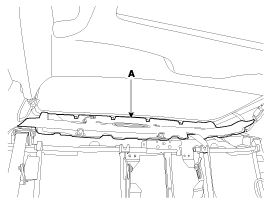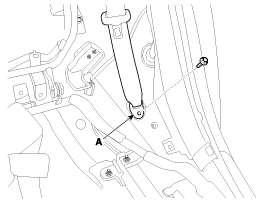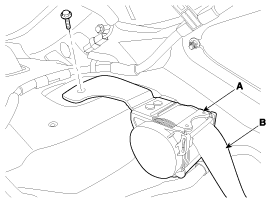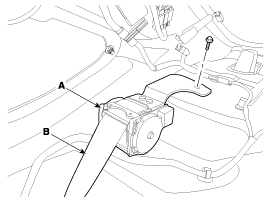Hyundai Genesis: Rear Seat Belt / Rear Seat Belt Retractor Repair procedures
Hyundai Genesis (DH) 2013-2016 Service Manual / Body (Interior and Exterior) / Rear Seat Belt / Rear Seat Belt Retractor Repair procedures
| Replacement |
|
| 1. |
Remove the rear package tray trim.
(Refer to Interior Trim - "Rear Package Tray Trim") |
| 2. |
Remove the rear curtain assembly
(Refer to Body Electrical System - "Rear Curtain") |
| 3. |
Remove the rear package tray cushion (A).
|
| 4. |
After loosening the mounting bolt, then remove the rear seat belt lower anchor (A).
|
| 5. |
After loosening the retractor (A) mounting bolt, remove the rear seat belt (B).
[LH]
[RH]
|
| 6. |
Install in the reverse order of removal.
|
 Rear Seat Belt Retractor Components and Components Location
Rear Seat Belt Retractor Components and Components Location
Component Location
1. Rear seat belt retractor [LH]2. Rear seat belt retractor [RH]
...
 Rear Center Seat Belt Retractor Components and Components Location
Rear Center Seat Belt Retractor Components and Components Location
Component Location
1. Rear center seat belt retractor
...
Other information:
Hyundai Genesis (DH) 2013-2016 Service Manual: Speakers Repair procedures
Inspection Troubleshooting of the speakers When handling the speakers: - Do not cause shock to the speakers by dropping or throwing them. - Be careful not to drop water and oil on the speakers. - Use caution to handle the speaker because diaphragm made of pap ...
Hyundai Genesis (DH) 2013-2016 Service Manual: Intake Actuator Repair procedures
Inspection 1. Turn the ignition switch OFF. 2. Disconnect the intake actuator connector. 3. Verify that the intake actuator operates to the fresh position when connecting 12V to terminal 3 and grounding terminal 4. Verify that the intake actuator operates to the recirculation position w ...
© 2013-2025 www.hgenesisdh.com






